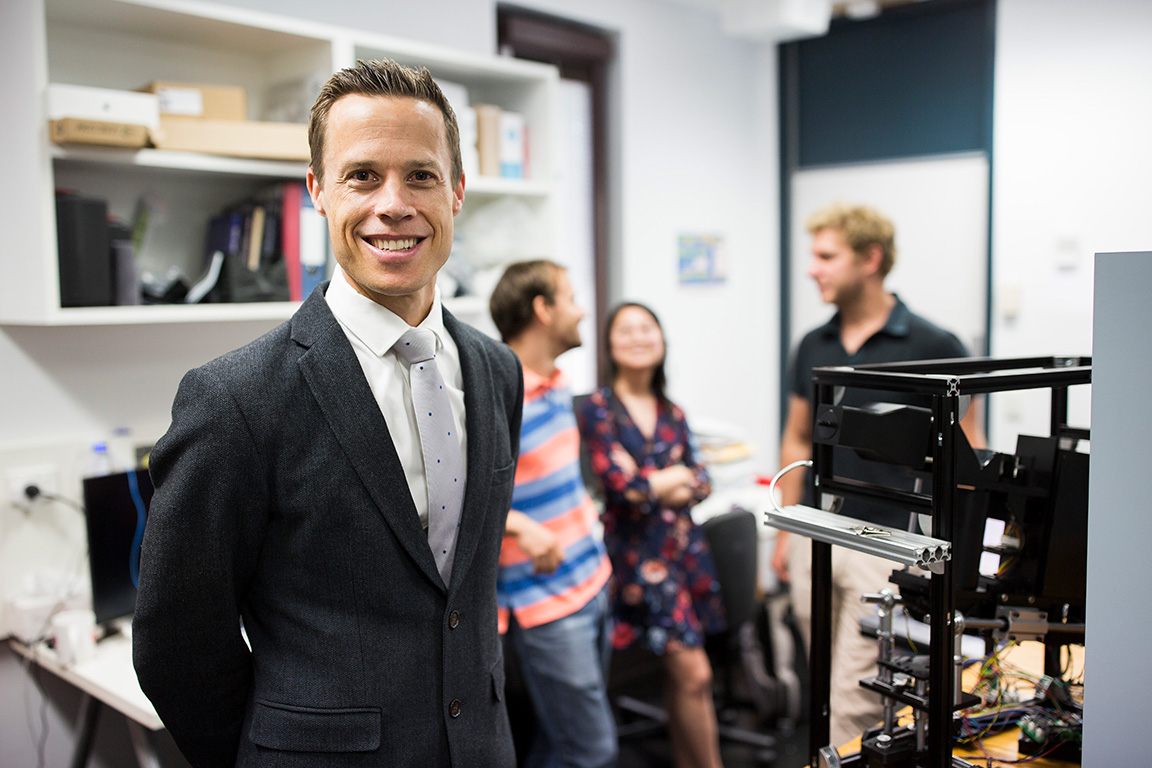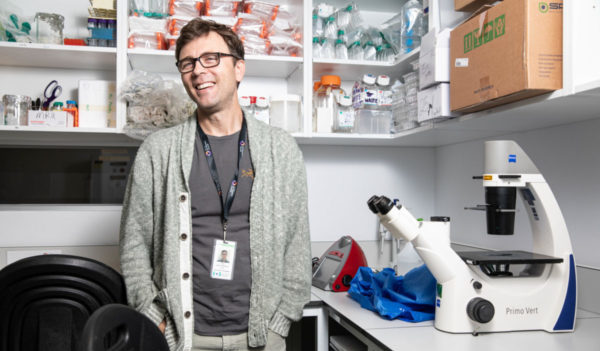News
Philanthropic support for sight-saving technology
Research aimed at improving the screening process for diabetic eye disease and better understanding communication between the retina and brain has received new support.
Two CERA projects aiming to improve how the eye is understood have both been awarded grants in the Perpetual 2022 IMPACT Philanthropy Application Program totalling almost $210,000.
Both projects are using ground-breaking technology to examine parts of the eye in greater detail than ever before, potentially unlocking new ways to diagnose, monitor and treat disease.
Every year the program issues grants to organisations that successfully demonstrate improved outcomes for the communities they serve.
Associate Professor Peter van Wijngaarden, CERA Deputy Director and Dr Luis Alarcon-Martinez, Principal Investigator, have respectively received grants of $120,000 via the Hecht Trust and $90,000 via The Lionel & Yvonne Spencer Trust.

Diabetes-related vision loss
Through this ongoing support, Associate Professor van Wijngaarden and his Ophthalmic Neuroscience Unit have pioneered a new retinal imaging technology called hyperspectral retinal imaging.
Instead of a single ‘white-flash’ photograph, hyperspectral imaging takes a series of multi-coloured photographs. This provides previously unavailable information about the retina – a complex layer of cells at the back of the eye.
“Our team was the first in the world to show this method can detect signs of Alzheimer’s disease in the eye, and the Hecht Trust were one of the earliest supporters,” says Associate Professor van Wijngaarden.
Hyperspectral imaging also offers insights into diabetic retinopathy, the leading cause of avoidable vision loss and blindness for working-age Australians.
“For people living with diabetes, it’s very hard to have regular screenings when they are juggling so many other health priorities.”
Currently, every person with diabetes needs screening at least every one to two years. The team aim to determine whether this technology can improve the precision of screening for diabetic eye disease.
“We’re hoping that provides the extra information we need to really personalise screening journeys. For some people, it might allow us to extend the interval between examinations.”
Associate Professor van Wijngaarden says his team are thrilled at the latest funding from Perpetual via the Hecht Trust: “Our ongoing relationship with the Hecht Trust over several years has been pivotal to the support of our group.”

The retina and brain
For Dr Luis Alarcon-Martinez, The Perpetual Grant will enable his Visual Neurovascular Research Unit to continue their investigation into how blood is distributed in the retina.
“We are trying to understand the communication between blood vessels and neurons, because these two systems in the retina and the brain rely on each other so much,” says Dr Luis Alarcon-Martinez.
This communication is affected in eye diseases like glaucoma and ischemic retinopathy, so understanding this communication could help prevent vision loss.
Dr Alarcon-Martinez explains that, in ischemic retinopathy, a lack of blood supply cuts the surrounding neurons off from nutrients and oxygen: “When the blood returns, there are still issues with the retina.”
Recently, his team found that cells located around the vessels called pericytes may regulate this blood flow.
“They’re amazing because they act like muscle cells – squeezing and releasing the vessel to control the blood flow and the nutrients and oxygen passing through to the neurons,” he says
Observing this blood flow is made possible by looking at live mice through the high-resolution, two-photon microscopy setup that was developed by Dr Alarcon-Martinez and his colleagues at the University of Montreal.
This technology has also enabled the unit to discover the pericytes protrude very thin tubes, called nanotubes, that communicate to each other and supply blood where needed.
“We found that during ischemia retinopathy and glaucoma these nanotubes break down,” Dr Luis Alarcon-Martinez says.
These findings potentially have a huge impact, with many other diseases facing this reduction of blood supply.
“You have to consider that people suffering from a stroke in the brain or diseases like Parkinson’s and Alzheimer’s all have these events. So, the impact is enormous.”
For Dr Alarcon-Martinez, this comes in the wake of recently awarded grants from the Alcon Research Institute worth $360 000 and the Weary Dunlop Foundation worth $20 000 for his team’s groundbreaking glaucoma research.
“It’s a great result for everyone,” he says.
“At the same time, it’s an important amount of money, so there’s also a huge responsibility.”
